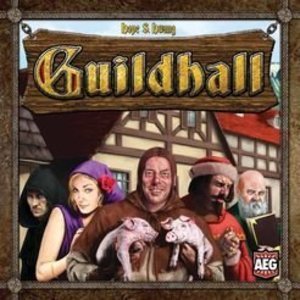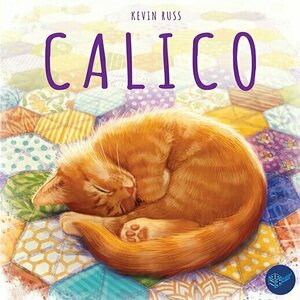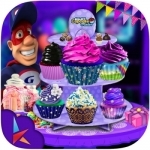
DIY Galaxy Cupcake Maker - Chef Kitchen Craze fun
Games and Entertainment
App
Hey friends the new galaxy cupcake maker game is here! Its time to move to the milky way with this...
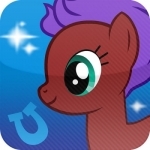
Pony Creator
Games
App
Create your very own personalized pony characters! The Pony Creator allows you to customize your...
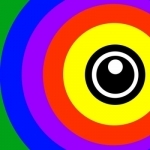
Thermo Infrared IR FX thermal camera
Photo & Video and Utilities
App
Enjoy this thermal or infrared camera effects to turn your iphone or ipad into a camera with real...
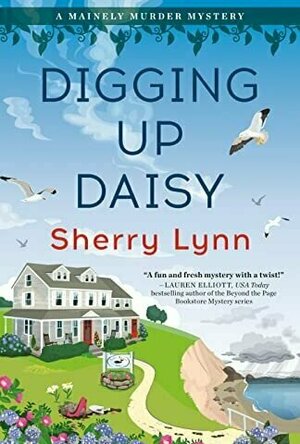
Digging Up Daisy
Book
In a fresh new Maine-set cozy from author Sherry Lynn, Kinsley Clark must root out a killer before...
Purple Phoenix Games (2266 KP) rated TEN in Tabletop Games
Nov 28, 2021
Disclaimer: We were provided with a copy of TEN for the purposes of this review. This is a final production copy, so what you see pictured is what you would receive in a retail copy of the game. -L
TEN is a push-your-luck game of set collection and auction/bidding in which players are trying to amass the most points by the end of the game. Points are earned by collecting sets of numeric sequences in the 4 colors of the game: Blue, Green, Pink, and Orange. Played over a series of turns, players will be drawing/collecting cards from the tableau, buying cards from the Market, or Busting if they push their luck a bit too far. To setup for a game, assemble the deck of cards as dictated by the player count and set it in the play area. Each player gets 5 Currency tokens with which to start the game, and are all dealt a random reference card. The player who was dealt the reference card with the Starting Player symbol will begin the game. Before getting into the actual gameplay, I want to mention the different card types, as to provide a better understanding when reading this review. In each of the 4 colors, there are card values numbered 1-9, with more copies of the lower numbers and fewer of the higher numbers. There are also Wildcards that can be used to represent any #/color, depending on the card. Some cards in the deck are Currency cards and show a value of 1-5 Currency. Should you choose to take these from the tableau, you collect that amount of Currency to be used for auctions or buying cards in later turns.
On your turn, you will perform a series of actions, the first of which is Draw a Card. You will draw a card from the top of the deck and place it in the tableau. If the card is a # card or a Currency card, you will then decide if you wish to continue drawing cards. If you do, draw the next card, and so on, until either you decide to stop or you Bust (more on this in a bit). As long as you do not Bust, you can decide when to stop drawing cards to the tableau. You may then take one of the following rewards: take all the # cards to your play area, or take Currency tokens (equal to the amount shown on the Currency cards in the tableau). When you take the # cards, they go into your play area and all other players will collect Currency tokens. You then have the opportunity to Buy a card from the Market (by paying the numeric value of the card) and add it to your play area. If you instead choose to collect Currency, you will take Currency equal to the total value of Currency in the tableau, and all other players receive nothing from your turn. All # cards are moved to the Market, and your turn ends. In the picture below, if I choose to take the # cards, I would take the Orange 2 and Blue 6 to my play area, and all other players would collect 7 Currency. Conversely, I could choose to take 7 Currency, and the # cards are added to the Market (on the right-hand side of the picture).
So how does Busting work? The tableau may never have a value of more than 10. Every # card you draw adds to your total value, and any Currency card drawn subtracts from the total. If you were to draw a # card that would give you a total value of more than 10, you Bust! OR if you ever have Currency cards that total more than 10, you Bust as well. So there’s a bit of math involved, with addition and subtraction, but you have to make sure you never get more than 10! For example, in the picture below, the net total value of the tableau is 1. (8 from # cards, -7 from Currency cards) If I were to draw a Currency card of 4-5, I would Bust, because that totals more than 10. In this pictured instance, any # card I draw would not make me Bust, as the highest total would only be a 10, given the current cards in play. If you ever push your luck too far and end up Busting, all # cards in the tableau are moved to the Market, and you gain a Bust token (worth 3 Currency). If you Busted with # cards, then all other players will collect Currency tokens, but if you Bust with Currency cards, nobody receives anything. After resolving a Bust, your turn ends and the game continues to the next player.
If, on your turn, you ever draw a Wildcard, your turn pauses and the Wildcard is auctioned. Each player will have one chance to either bid (increasing the bid from the previous) or pass. Whomever wins the auction must pay their bid, and they collect the Wildcard to their play area. Once the auction has been resolved, your turn continues as normal. It is possible to have multiple auctions on your turn – it all depends on the cards. The game continues in this fashion, players taking turns drawing cards, collecting cards/Currency, buying from the Market, bidding in auctions, etc., until the draw deck has been depleted. The active player finishes their turn as normal, but may not draw any more cards. Points are then tallied. All players will arrange their cards to create consecutive sequences of numbers in the 4 different colors. You receive 1 point per card in your longest sequence of each color. If you have a complete set of numbers 1-9 in a color, you get a bonus point. Players count up all their points, and the player with the highest value is the winner!
That kind of seems like a lot, but I promise it’s actually pretty intuitive when you get playing. Also, huge shoutout to AEG for providing such a well-done reference card – it includes a little flowchart to help you with how the turns flow. The gameplay itself is essentially pretty straightforward. You draw a card, and then react based on what it is. Bust? Collect a Bust token and your turn ends. No Bust? Decide if you want to keep drawing. Done pushing your luck? Collect either the # cards or Currency. Try to make sequential runs of numbers in the different colors – the more cards you get in sequence, the more points you’ll get at the end of the game. The thing that elevates TEN beyond a simple push-your-luck game to me is that it requires more strategy than just luck. You can see what cards are available in the Market – is there something you need to buy? You can see everyone else’s playing area – do they need any of the numbers you just revealed? You know how much Currency every player has – do you bid high on this Wildcard because your neighbor can’t outbid you? There is so much more than just luck in this game, and that is what takes it to the next level for me. I know that Travis has reviewed No, Thanks! in the past, and I would say that this gives me similar vibes, but way better in my opinion.
When it comes to playing games, I am generally not a huge risk-taker. I like making logical choices based on known information and end-game strategy. But something about this game just gets me. I think one element that makes me love this game is the different types of cards – # cards and Currency cards. When you’re pushing your luck and drawing cards, there’s an added element of excitement, because the two different types of cards affect the net total differently. It doesn’t all positively add to the net total, which makes me more likely to keep drawing in hopes that things will cancel out and I can maximize the turn. If everything all added together, and you just couldn’t get more than 10, I would probably only ever draw 2 cards per turn, max., just to make sure I didn’t Bust. But the fact that Currency cards subtract from the net total encourages players to keep pushing their luck, and either earning a big payoff or a big Bust. This game is exciting, engaging, and entertaining to play, and that makes it fun!
To touch on components, AEG always hits it out of the park – and TEN is no exception. The game is mostly just a bunch of cards, and some white/black Currency tokens. The tokens themselves are nice plastic, and are smooth and chunky in hand. The cards are thick and sturdy, and hold up to shuffling pretty well. The colors of the game are bright and vibrant, and they are very clear to differentiate between. It’s a nice pop of color on the table, and that adds to the overall enjoyment of the game. Each of the 4 colors, and the Wildcards for that matter, have a unique background design – which can help our colorblind friends who may not necessarily be able to differentiate between the colors. Just an added plus to help the gamers tell what cards belong to what colors! The game box is equally as colorful, and is eye-catching on the shelf. All in all, I’d say AEG gets a 10 for their production quality here. (Get it?)
I spoke earlier about judging a game by its mechanics, and how TEN really challenged me on that. I was expecting a game that I would like, but would be kind of just ok overall for me. What I got is a game that is highly strategic, yet also unpredictable at times. I am definitely a planner when it comes to strategy, but the unpredictability of this game is light, fun, and engaging for all players at all times. It just is fun to play. This is a game that I see staying in my collection for a long time, and hopefully getting to the table quite often when I need a quick filler that isn’t so light that it’s mindless, but not heavy enough that it’s a brain-burner. If you’re in the market for a fun little game that challenges all players, I would definitely recommend checking out TEN. Purple Phoenix Games rates our games on a scale of 1-6 (not 10 unfortunately in this case), and we give this one a solid 5 / 6.
Purple Phoenix Games (2266 KP) rated Calico in Tabletop Games
Oct 3, 2019
Calico is a game of tile drafting, tile placement, pattern recognition, with a hint of point salad. Now, not everything you do will score you points, but there are many ways to score. This game plays equally well solo as it does with a group, but how does one play it?
DISCLAIMER: We were provided a prototype copy of this game for the purposes of this review. As this is a preview copy of the game, I do not know if the final rules or components will be similar or different to what we were provided. -T
To setup, each player chooses a quilt board that has a different colored stitching printed on it. This is the player’s color. Each player will receive their goal tiles of matching color and choose three of these to place on their boards in the starting positions (the rule book also details a recommended first game placement and tile choice). These tiles show the requirements to score them and how many points each scoring tile is worth. Three cat placards are chosen that will be visiting your quilt sections and who score differently from each other. Place the corresponding cat tokens nearby and randomly assign two black-and-white patter tokens to each cat under their placard. Place the cute rainbow tile and matching button tokens nearby. Shuffle the quilt patch tiles and place them in a pile or stack at the middle of the table. From this collection deal two per player, and draw and reveal three more face up to be the offer row. You are now ready to play.
On your turn you will place a tile from your hand, check for scoring, and then draw a new patch tile to your hand. You may place either of your tiles anywhere on your board in any orientation you like. Complete freedom! In order to score points, however, you will want to be strategic in where tiles are placed. You see, the scoring tiles you placed at setup will dictate how they score. Some tiles score when you have two sets of three similar tiles. Tiles are similar either by matching their patterns or their tile colors. Some tiles score when you have placed NO matches at all. Each of these tiles will score points based on whether you satisfied its requirements by color, by shape, or both. Example: a scoring tile says AAA-BBB. This means it wants two sets of three matching patch tiles surrounding it – and ONLY the tiles surrounding it. It also has printed scores of 8 and 13. This means that if you have two sets of tiles that match by color only (but not pattern) you will score 8 points. Should you match three tiles’ colors but also match three tiles’ patterns you will score 13 points.
It is important to note here that the six tiles surrounding the score tile do not have to match exactly. So you do not have to have three yellow tiles with ivy pattern. You need to have three yellow tiles (if you chose yellow for this example) and three tiles that have the ivy pattern. Your other set can be three blue tiles with three stripes patterns. As long as you have these sets from the six surrounding tiles you will score what is on that tile.
The cats come into play when you satisfy their scoring requirement printed on their placard. So Thimble, the actual Calico cat, will visit a portion of your quilt when you have placed three tiles adjacent to each other with their preferred pattern. In the example shown Thimble likes ferns and polka dots. So whenever you have three or more connecting tiles that share one of these patterns you will grab a Thimble token and place it on one of the tiles on your board. Each cat will have different scoring requirements and patterns of which to be aware.
Similarly, but with colors, are the rainbow scoring button tokens. Each patch tile contains a color and a pattern. Cats are attracted to patterns, whereas buttons are sewn onto similar colored tiles. Match up three tiles of the same color and you can sew a button onto your quilt. Buttons are worth 3 points and they just look great on your quilt.
Play continues in this fashion until all quilts are completed. Players then tally up their scores and determine the winner of Calico!
Components. Again, we were provided a prototype of this game, so I will not comment too much on the components as they will probably change from now until production. But, I am able to comment on the art and visual aspects. The art is by Beth Sobel. Do I need to say more at this point? Yes? Ok. So the illustrations of the cats are wonderful. The sleepy little space heaters are depicted so well and they really are cute (I mean, if you’re into cats). The patterns and colors on the quilt tiles and buttons are absolutely fantastic. Just seeing it on the table makes me excited to play it, and for a game about quilts and cats that is REALLY saying something. The art and visual appeal of this game is truly off the charts.
I am not colorblind, but I do appreciate when designers consider options for gamers who are. In Calico, though you are playing for and concentrating on patterns and colors, the tiles are also printed with icons that match the shapes of the buttons to be claimed. As you can see in our photos, yellow tiles have a crescent moon, which match the crescent moon button you claim. The purple tiles have a ghost? Onion? Jawless skull? Blueberry? Whatever it is, it also matched the token you claim for the rainbow bonus points. I like this. I like this a lot.
So do we like playing it? I have played several games of this solo as well as with a group, and it truly is fantastic. It’s one of those games that you can go nutty trying to figure out the optimal play, or you can just play it casually to come up with the prettiest end result. Granted, you probably will not win much, but golly look at your quilt! You can play Calico with ANY gamer type: beginner, casual, hard core, and industry personalities. And I believe that every one who plays this will have a great time and salivate for more plays (cats salivate, right? Or is that a dog-only thing?). I am very excited to see what Flatout Games has in store for this one on Kickstarter, and I would be happy to play with anyone who asks, or as part of anyone’s gaming event.

Make Up Me: Halloween - Girls Makeup, Dressup and Makeover Game
Beauty, Entertainment and Games
App
It's gorgeous! It's ghostly! HERE COMES THE TREAT OR TRICK TIME AGAIN! My girls, welcome to "Make-Up...
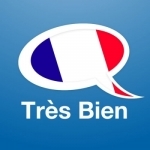
Learn French - Très Bien
Education and Travel
App
TRÈS BIEN ® is the award-winning app that makes learning Francês simple and fun! Quickly learn...

Snaptee - Custom Tshirt
Shopping and Lifestyle
App
Snap your masterpiece and we make & ship it as a tee! Snaptee is the first mobile app in the world...
